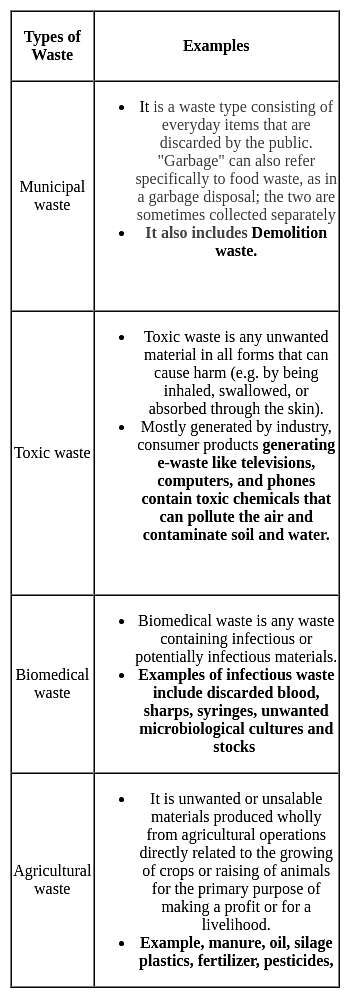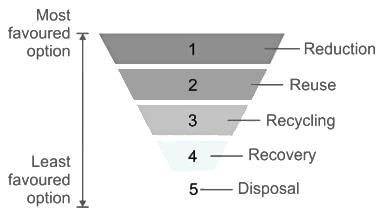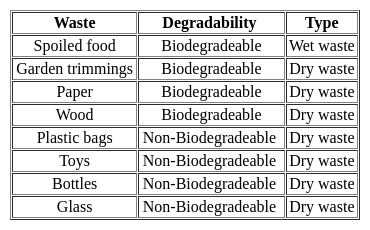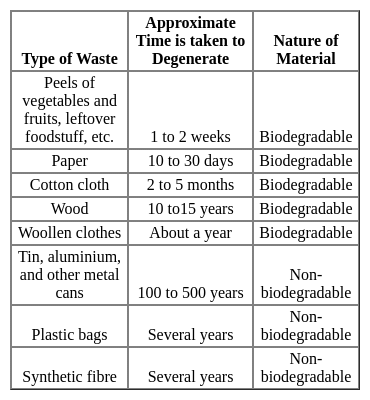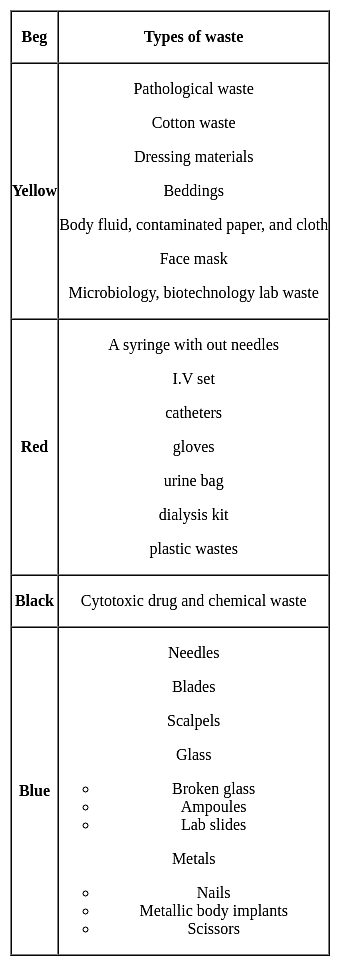Test: Environmental Awareness (Wastes) - Software Development MCQ
20 Questions MCQ Test - Test: Environmental Awareness (Wastes)
Select the incorrect match in terms of correct waste management practices.
Match List I with List II
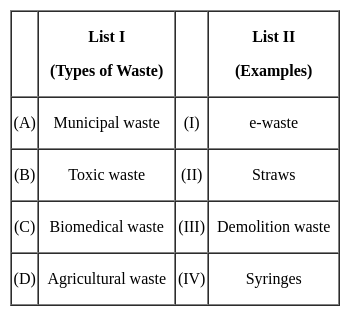
Choose the correct answer from the options given below :
Waste management has been one of the most current issues being tackled at present. Which of the following is a good example for it?
Rani separated her waste into two groups.
Group 1: spoiled food, garden trimmings, paper, wood
Group 2: plastic bags, toys, bottles, glass
This segregation is on the basis of:
Needles, syringes, scalpels and blades are disposed in:
Name the law in India which deals with waste management.
Which of the following is likely a characteristic of hazardous waste?
The biggest obstacle in managing municipal solid wastes in India is:
When is International E-Waste Day observed every year?
Which of the following materials CANNOT be recycled?
Which type of waste is classified as hazardous ?




